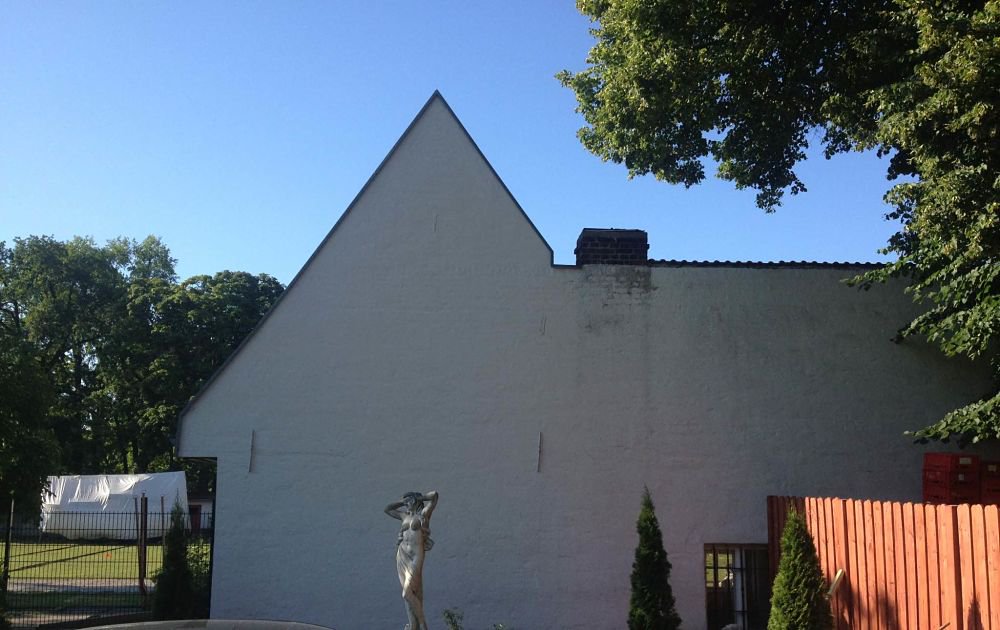A conventional solid house or a prefabricated house made of wood? For a long time, these were the two options that builders had to decide between. Now there is a third variant: build a solid prefabricated house that combines the advantages of traditional solid construction and cheap prefabricated construction.

Prefabricated houses and solid houses – what are the advantages of prefabricated house construction?
Compared to solid houses in traditional construction, the most obvious advantage of prefabricated houses is the significantly shorter construction time. Due to the weather-independent production of the prefabricated wall, roof and ceiling elements in production halls, the construction of the shell can be done in just a few days with less personnel and even in cold, rainy months. However, the lightweight timber frame construction of prefabricated houses has adverse effects on the energy efficiency and value of the house and many builders simply do not like it.
For the shell construction of a conventional solid house, however, at least three to four weeks must be planned, even with quite a lot of manpower and in dry, warm weather. The planning of a conventional building is also significantly more complex than that of prefabricated houses. Because a prefabricated house normally comes from just one manufacturer, there is no need for coordination and agreements with various contacts from the various trades that need to be managed in solid construction.
For a more detailed comparison of other aspects as well, see our article Pros and Cons of Prefab vs. Solid Home .
95% of all prefabricated houses are produced in timber construction. However, since in Germany in particular there is greater trust in solid building materials than in lightweight construction, some construction companies have expanded their range to include the prefabricated house in solid construction. Such a massive prefabricated house combines the advantages of both construction methods.
The alternative: build a massive prefabricated house
The solid prefabricated house is built brick by brick like a conventional building – just not directly on the construction site.
The wall segments are prefabricated in workshops from solid building materials. Depending on the construction company, the builders can choose from different materials – such as concrete, brick, aerated concrete blocks or sand-lime bricks. Whether and which materials can be selected differs from provider to provider.
The solid prefabricated house can be erected just as quickly and regardless of the weather thanks to the preparatory work. Other disadvantages of conventional solid construction also do not apply, since this construction method, like the prefabricated house in timber frame construction, is usually carried out by only one company.
Manufacturing, logistics, transport and assembly cause
Due to the heavy components, transporting the components to the construction site is more expensive than with conventional prefabricated houses. On the other hand, it is much easier to achieve high heat efficiency, good sound insulation and a pleasant indoor climate in a solid prefabricated house than in a lightweight prefabricated house.
As a builder of a prefabricated solid house, you are more closely tied to the model offered by the manufacturer and can only plan individually with a significantly higher cost rate. However, because the stability and service life are higher than that of a prefabricated house in lightweight construction, the solid construction has a positive effect on the resale value of the property.
The selection of prefabricated houses has increased rapidly in recent years. The floor plans or building materials are already planned individually for around two-thirds of all prefabricated houses – and the trend is rising. At the same time, massive prefabricated houses are also becoming increasingly popular, despite slightly higher costs.
The conclusion
The prefabricated house in solid construction is not quite as cheap as a prefabricated house in timber construction. Compared to conventional construction, however, it saves a lot of costs:
Manufacturing in production halls is more efficient and therefore cheaper than bricking on site.
The quick construction shortens the period in which the budget is additionally burdened by rent payments.
The so-called dry living is eliminated.
If no individual adjustments are made, there are no architect costs.
If you prefer solid construction to lightweight construction, you can save a lot with a solid prefabricated house.




